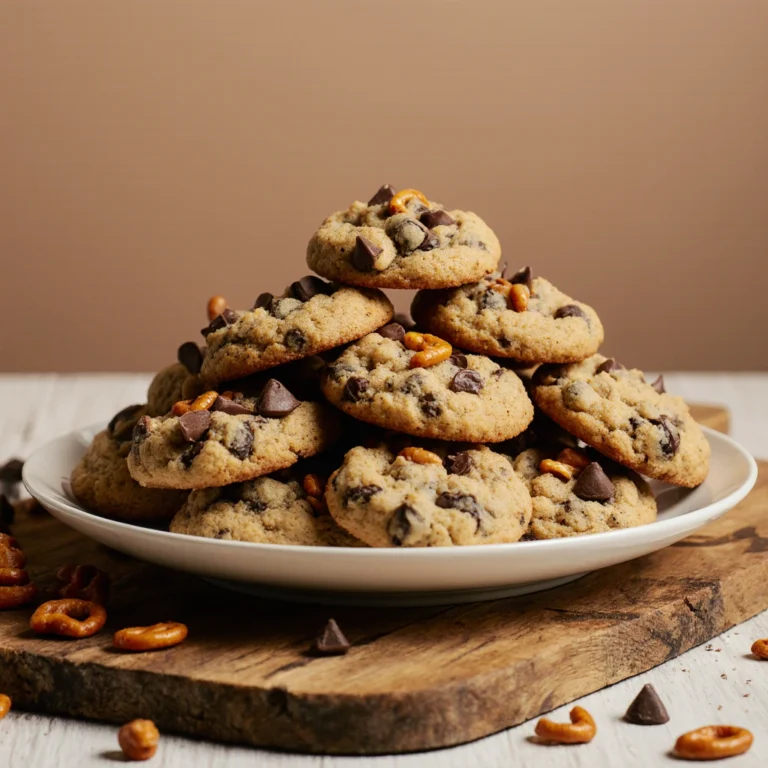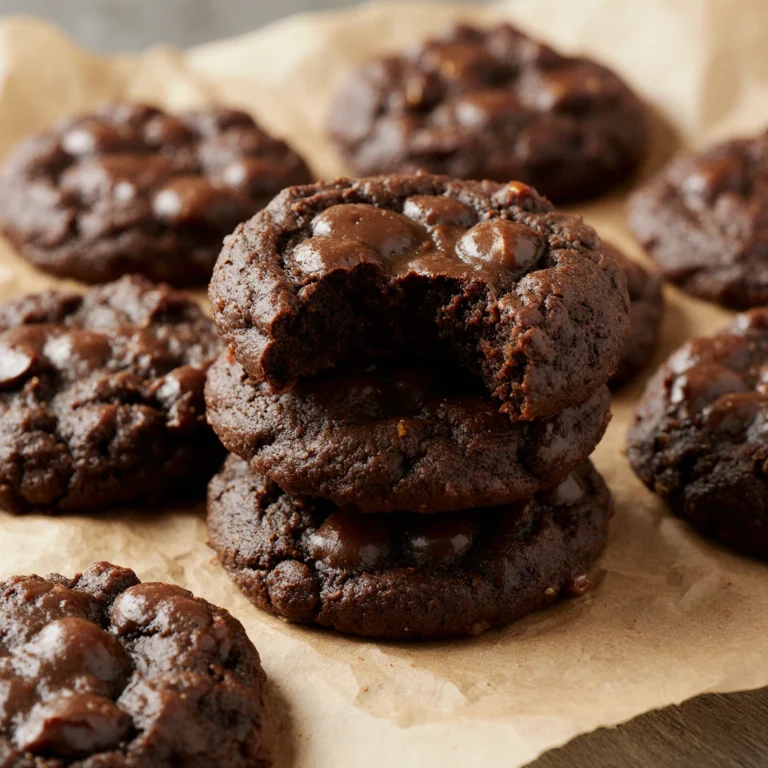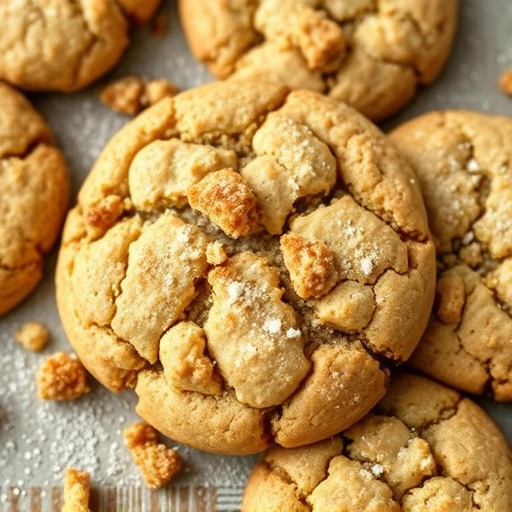Table of Contents
Craving that perfect edible cookie dough recipe that’s both safe and incredibly delicious? You’re in the right place! This foolproof recipe delivers all the nostalgic flavors of raw cookie dough without any of the food safety concerns. Whether you’re satisfying late-night cravings, preparing a fun dessert for friends, or looking for a quick sweet treat, this edible cookie dough will become your go-to comfort food.
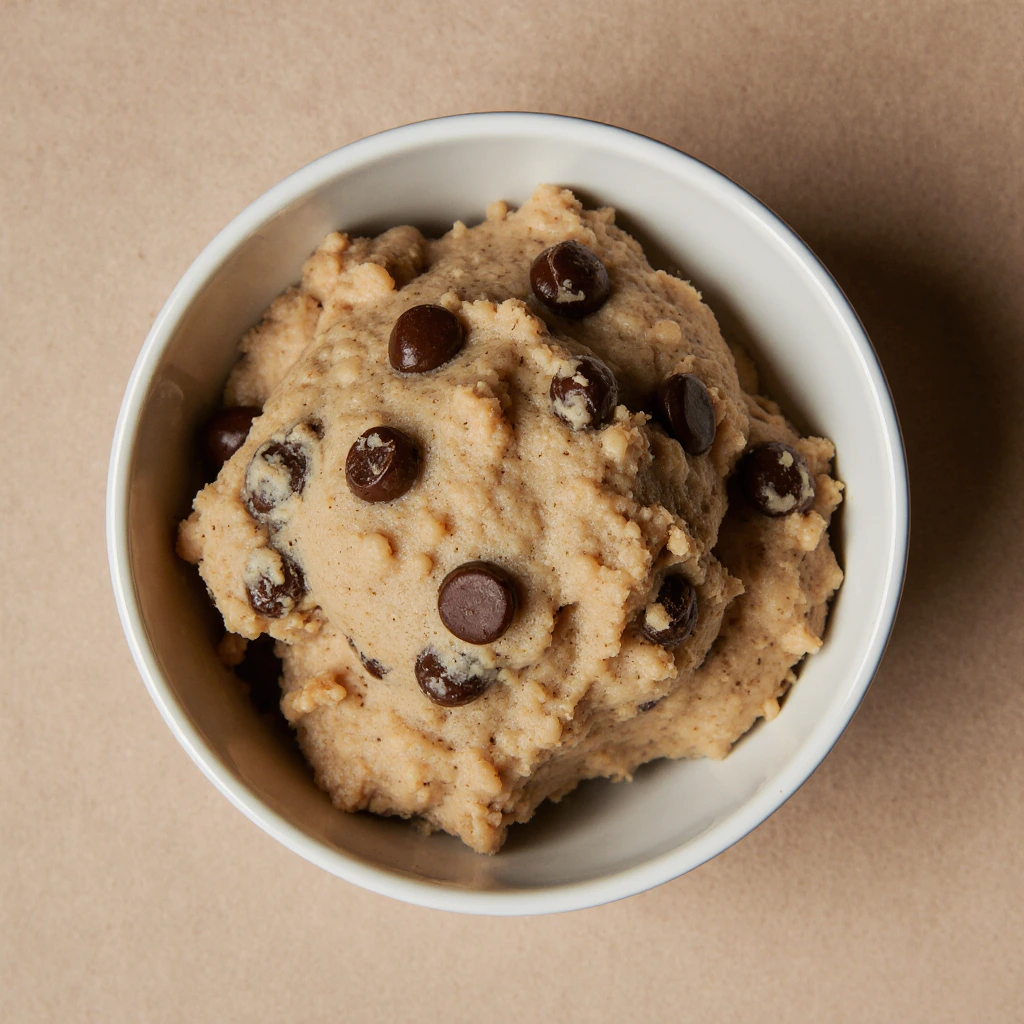
Ingredients List
Here’s everything you’ll need for this irresistible edible cookie dough recipe:
Dry Ingredients:
- 1 cup all-purpose flour (heat-treated for safety)
- ½ cup brown sugar (packed for that rich, caramel-like sweetness)
- ¼ cup granulated white sugar (adds perfect crystalline texture)
- 1 teaspoon vanilla extract (pure vanilla creates depth of flavor)
- ½ teaspoon salt (enhances all the sweet notes)
Wet Ingredients:
- ½ cup unsalted butter (softened to room temperature for easy mixing)
- 3-4 tablespoons milk of choice (whole milk, almond, or oat milk work beautifully)
Mix-ins:
- ¾ cup mini chocolate chips (or your favorite variety)
- Optional: chopped nuts, sprinkles, or candy pieces
Smart Substitutions:
- Gluten-free option: Replace all-purpose flour with 1:1 gluten-free baking flour
- Vegan version: Use plant-based butter and non-dairy milk
- Lower sugar: Reduce both sugars by ¼ cup and add stevia to taste
- Protein boost: Add 2 tablespoons vanilla protein powder (reduce milk slightly)
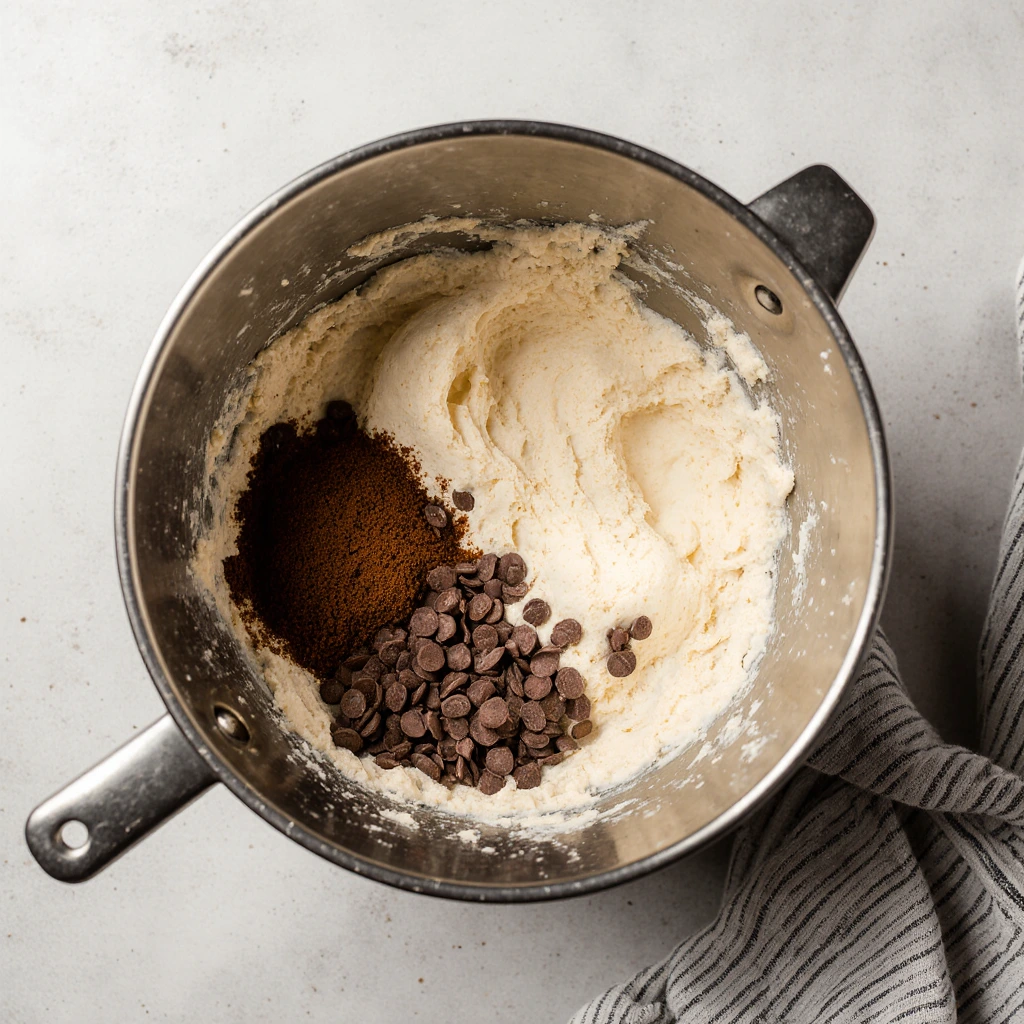
Timing
This edible cookie dough recipe is incredibly time-efficient, making it perfect for spontaneous sweet tooth emergencies:
- Prep Time: 5 minutes (flour heat-treatment included)
- Active Mixing Time: 5 minutes
- Total Time: 10 minutes
That’s 85% faster than baking actual cookies and 100% more satisfying when you want instant gratification! The beauty of this recipe lies in its simplicity – no baking, no waiting, no complicated techniques required.
Step 1: Heat-Treat Your Flour for Safety
Start by spreading your flour evenly on a microwave-safe plate. Microwave in 30-second intervals, stirring between each interval, until the flour reaches 160°F (about 1-2 minutes total). This crucial step eliminates any potential harmful bacteria, making your cookie dough completely safe to eat raw. Let the flour cool completely before proceeding – hot flour will melt your butter prematurely!
Step 2: Cream the Butter and Sugars
In a medium mixing bowl, combine your softened butter with both brown and granulated sugars. Using a hand mixer or wooden spoon, cream these ingredients together for 2-3 minutes until the mixture becomes light, fluffy, and slightly pale. This step creates the perfect creamy base that mimics traditional cookie dough texture.
Step 3: Add Vanilla and Create the Base
Pour in your vanilla extract and mix thoroughly. The vanilla should be evenly distributed, creating an aromatic base that will make your kitchen smell absolutely incredible. This is where the magic really starts to happen!
Step 4: Incorporate the Dry Ingredients
Gradually add your cooled, heat-treated flour and salt to the butter mixture. Mix gently until just combined – overmixing can make your cookie dough tough. The mixture should start looking like actual cookie dough at this point, which is exactly what we want!
Step 5: Achieve Perfect Consistency
Add milk one tablespoon at a time until you reach the desired consistency. Some people prefer thicker, more substantial cookie dough, while others like it slightly softer and more spoonable. Start with 3 tablespoons and adjust from there – you’re the chef!
Step 6: Fold in Your Favorite Mix-ins
Gently fold in your chocolate chips and any other desired mix-ins. This is where you can get creative! Mini chocolate chips distribute more evenly, but regular-sized chips provide satisfying chunks of chocolate in every bite. Mix just until evenly distributed.
Step 7: Taste and Adjust
Here’s the best part – taste your creation! Adjust sweetness, add more vanilla, or incorporate additional mix-ins based on your preferences. This recipe is forgiving and adaptable to your exact taste preferences.
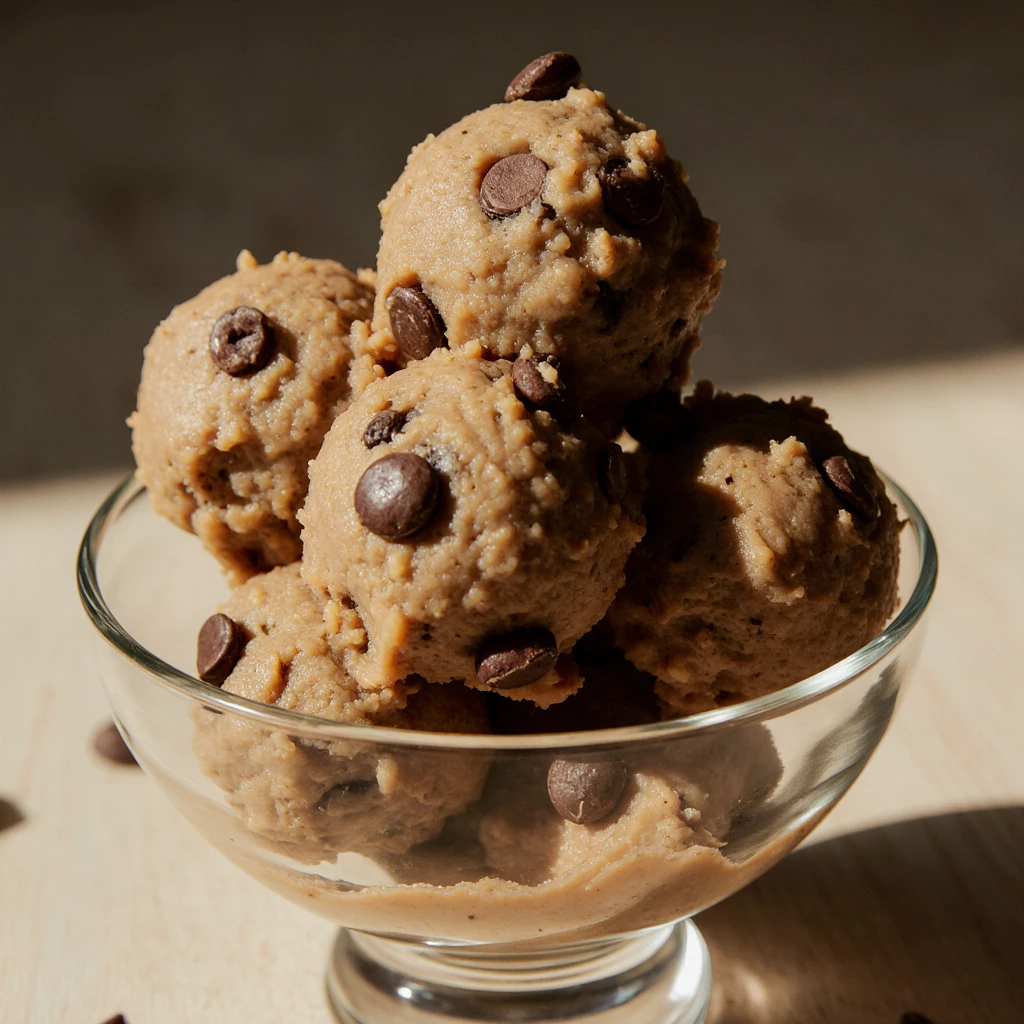
Nutritional Information
Understanding the nutritional profile of your edible cookie dough helps you enjoy it mindfully:
Per ¼ cup serving (approximately 8 servings total):
- Calories: 285
- Total Fat: 12g
- Saturated Fat: 7g
- Carbohydrates: 45g
- Dietary Fiber: 1g
- Sugars: 32g
- Protein: 3g
- Sodium: 150mg
- Calcium: 25mg
- Iron: 1.5mg
Key Nutritional Notes:
- Contains beneficial fats from butter that help with vitamin absorption
- Provides quick energy from natural sugars
- Heat-treated flour retains most of its original nutritional value
- Chocolate chips contribute antioxidants and mood-boosting compounds
Healthier Alternatives for the Recipe
Transform this treat into a more nutritious option without sacrificing taste:
Protein-Powered Version: Replace ¼ cup flour with vanilla protein powder and add an extra tablespoon of milk. This modification increases protein content by 15g per serving while maintaining that beloved cookie dough texture.
Fiber-Rich Alternative: Substitute half the all-purpose flour with almond flour or oat flour. This swap adds healthy fats, fiber, and creates a slightly nuttier flavor profile that many find even more satisfying than the original.
Natural Sweetener Makeover: Replace granulated sugar with coconut sugar or maple sugar for a lower glycemic index option. These natural sweeteners provide trace minerals and create complex flavor notes.
Superfood Enhancement: Add 1 tablespoon of chia seeds or ground flaxseed for omega-3 fatty acids and additional fiber. These tiny powerhouses blend seamlessly into the dough while boosting nutritional value significantly.
Serving Suggestions
Elevate your edible cookie dough experience with these creative presentation ideas:
Classic Comfort Style: Serve in small bowls with a spoon alongside a glass of cold milk. This nostalgic presentation brings back childhood memories while satisfying adult cravings.
Dessert Board Creation: Include cookie dough as part of a dessert charcuterie board alongside fresh berries, pretzels, marshmallows, and graham crackers for dipping. This interactive approach makes it perfect for entertaining.
Ice Cream Companion: Use as a topping for vanilla ice cream or blend it into milkshakes for an indulgent treat that combines two beloved desserts into one unforgettable experience.
Energy Ball Transformation: Roll the dough into small balls and chill for 30 minutes to create portable, bite-sized treats perfect for lunch boxes or afternoon pick-me-ups.
Fruit Dip Innovation: Serve alongside apple slices, strawberries, or banana chunks for a surprisingly delicious combination that balances sweetness with fresh fruit flavors.
Common Mistakes to Avoid
Learn from these frequent pitfalls to ensure perfect results every time:
Skipping Flour Heat Treatment: This is the most critical mistake that compromises food safety. Raw flour can contain harmful bacteria, so never skip this essential step. Always heat-treat your flour to 160°F before using.
Using Cold Butter: Cold butter won’t cream properly with sugars, resulting in a grainy, unpleasant texture. Always allow butter to reach room temperature naturally – microwaving can create hot spots that affect consistency.
Overmixing the Dough: Excessive mixing develops gluten in the flour, creating tough, chewy cookie dough instead of the tender, melt-in-your-mouth texture you want. Mix just until ingredients are combined.
Adding Too Much Liquid Initially: Start with less milk than you think you need. It’s easier to add more liquid than to fix overly wet dough by adding more dry ingredients, which can throw off your carefully balanced flavors.
Ignoring Taste Preferences: Cookie dough is highly personal! Don’t be afraid to adjust sweetness, vanilla, or mix-ins based on your preferences. The recipe serves as a foundation for your perfect version.
Storing Tips for the Recipe
Maximize freshness and extend the life of your edible cookie dough:
Short-Term Storage (1-3 days): Store in an airtight container in the refrigerator. The dough actually improves in flavor after 24 hours as ingredients meld together, creating even more complex, satisfying taste.
Long-Term Storage (up to 3 months): Portion dough into individual servings using ice cream scoops, place on a parchment-lined baking sheet, and freeze until solid. Transfer frozen portions to freezer bags for convenient single servings.
Preparation Ahead Tips: Pre-heat-treat flour in large batches and store in airtight containers for up to 6 months. This time-saving strategy means you can whip up cookie dough anytime without the extra step.
Texture Maintenance: If dough becomes too firm after refrigeration, let it sit at room temperature for 10-15 minutes or add a teaspoon of milk to restore the perfect consistency.
Freshness Indicators: Properly stored cookie dough maintains its fresh taste and texture for up to one week refrigerated. Discard if you notice any off odors or texture changes.
Best Amazon Picks :
- “9.5” Nonstick Fluted Cake Pan, Carbon Steel.
- Amazon Basics 6-Piece Nonstick Bakeware Set.
- Sweejar Baking Pans Set.
Conclusion
This edible cookie dough recipe delivers everything you crave: rich, sweet, perfectly textured cookie dough that’s completely safe to eat and ready in just 10 minutes. By heat-treating flour and eliminating eggs, you get all the nostalgic flavors without any worry, making it perfect for satisfying spontaneous sweet cravings or impressing guests with a unique dessert option.
Ready to indulge? Try this recipe today and share your delicious results in the comments below! We’d love to hear about your favorite mix-ins and creative variations. Don’t forget to subscribe for more easy, crowd-pleasing recipes that bring joy to your kitchen and smiles to everyone who tries them.
FAQs
Q: Is this edible cookie dough actually safe to eat? A: Absolutely! By heat-treating the flour to 160°F and using no eggs, this recipe eliminates the two main food safety concerns with traditional raw cookie dough. The heat treatment kills any potential harmful bacteria in flour while maintaining its baking properties.
Q: How long does homemade edible cookie dough last? A: When stored properly in an airtight container in the refrigerator, this cookie dough stays fresh for up to one week. For longer storage, freeze portions for up to 3 months. Always use clean utensils when serving to maintain freshness.
Q: Can I use this dough to bake actual cookies? A: While this recipe is optimized for eating raw, you can bake it! Drop spoonfuls onto a parchment-lined baking sheet and bake at 350°F for 10-12 minutes. The cookies will have a slightly different texture than traditional baked cookies but are still delicious.
Q: What’s the best way to heat-treat flour at home? A: The microwave method is quickest and most reliable. Spread flour on a microwave-safe plate and heat in 30-second intervals, stirring between each interval, until it reaches 160°F. Alternatively, bake flour on a baking sheet at 300°F for 5 minutes, stirring halfway through.
Q: Can I make this recipe dairy-free or vegan? A: Yes! Simply substitute the butter with vegan butter or coconut oil (solid, not melted) and use your favorite plant-based milk. The texture and flavor remain virtually identical to the original version.
Q: Why does my cookie dough taste floury? A: This usually indicates the flour wasn’t adequately heat-treated or wasn’t allowed to cool completely before mixing. Make sure your flour reaches 160°F during heat treatment and cools to room temperature before incorporating it into your recipe.

